NR 326 MENTAL HESI 6_2020 | NR326 MENTAL HESI 6_Graded A
Document Content and Description Below
NR 326 MENTAL HESI 6 – 2020 Psychiatric Hesi book 1. A nurse working in the emergency department of a children's hospital admits a child whose injuries could have been the result of abuse. Which ... statement most accurately describes the nurse's responsibility in cases of suspected child abuse? A. Obtain objective data such as radiographs before reporting suspicions. B. Confirm suspicions of abuse with the healthcare provider. C. Report any case of suspected child abuse. D. Document injuries to confirm suspected abuse. Rationale: It is the nurse's legal responsibility to report all suspected cases of child abuse (C), and notifying the nurse manager or charge nurse starts the legal reporting process. (A, B, and D) delay the first step in reporting the abuse. 2. An 8-year-old child is seen in the clinic with a green vaginal discharge. What action is most important for the nurse to implement? A. Assess the child's blood pressure. B. Counsel the child to wear cotton underwear. C. Report as suspected child abuse. D. Determine if the child takes bubble baths. Rationale: A green vaginal discharge is indicative of gonorrhea, a sexually transmitted disease. Since the child is 8 years old, the nurse should suspect child abuse and report the incident to the proper authorities (C). (A) is usually not related to infection. (B and D) are helpful in preventing bladder infections, but a green vaginal discharge is not a symptom of a bladder infection.3. On admission, a highly anxious client is described as delusional. The nurse understands that delusions are most likely to occur with which disorder? A. Dissociative disorders B. Personality disorders C. Anxiety disorders D. Psychotic disorders Rationale: Delusions are false beliefs characteristic of psychosis (D). Delusions are generally not characteristic of (A, B, and C). 4. Over a period of several weeks, one male participant of a socialization group at a community daycare center for older adults monopolizes most of the group's time and interrupts others when they are talking. What is the best action for the nurse to take in this situation? A. Talk to him outside the group about his behavior. B. Ask him to give others a chance to talk. C. Allow the group to handle the problem. D. Ask him to join another group. Rationale: After several weeks, the group is in the working phase and the group members should be allowed to determine the direction of the group. The nurse should ignore the comments and allow the group to handle the situation (C). A good leader should not have separate meetings with group members (A), as such behavior is manipulative on the part of the leader. (B) is dictatorial and is not in keeping with good leadership skills. (D) is avoiding the problem. Remember, identify what phase the group is in (initial, working, or termination) as an aid to determining expected communication style. 5. A 22-year-old female client is admitted to the psychiatric unit from the medical unit following a suicide attempt with an overdose of diazepam(Valium). When developing the nursing care plan for this client, what intervention would be most important to include? A. Assist her to focus on her strengths. B. Set limits on her self-defacing comments. C. Remind her of daily activities in the milieu. D. Assist her to identify why she was self-destructive. Rationale: Encouraging the client to focus on her strengths (A) helps her become aware of her positive qualities, assists in improving her self-image, and aids her in coping with past and present situations. Although nursing actions should assist the client in decreasing (B) and inform the client of (C), these interventions are not a priority at this time. (D) is not as important as assisting her to overcome the depression, which resulted in the overdose, and asking "why" is nontherapeutic. 6. The nurse reviews the laboratory findings for a client's urine drug screen that is positive for cocaine. Which client behavior should be expected during cocaine withdrawal? A. Psychomotor impairment B. Agitation and hyperactivity C. Detachment from reality and drowsiness D. Distorted perceptions and hallucinations Rationale: During cocaine withdrawal, the nurse should expect (A) and a pattern of withdrawal symptoms similar to those of one who uses amphetamines. (B, C, and D) are signs and symptoms of a person who is high on cocaine rather than experiencing withdrawal from cocaine. 7. A 25-year-old client has suffered extensive burns and is crying during dressing change treatment. The client tells the nurse, "Please let me die. Why are you all torturing me like this? I just want to die." Which response by the nurse is best?A. "We aren't torturing you. These treatments are necessary to prevent a terrible infection." B. "I know these treatments must seem like torture to you, but we want to help you recover." C. "You have so much to live for, and all of your family members want you to live." D. "Would you like me to call the chaplain so that you can privately discuss your feelings?" Rationale: (B) offers an empathetic response without sounding patronizing. (A) is not empathetic and is actually somewhat argumentative. The client is not asking for information as much as pleading for understanding. (C) is almost scolding and places blame on the client for wanting to die and possibly hurting his family members as a result. (D) might be appropriate if the nurse simply asks the client if a chaplain's visit is desired, but the nurse is dismissing the client's needs by not addressing them at the moment. 8. A 33-year-old client is admitted to a psychiatric facility with a medical diagnosis of major depression. When the nurse is assigning the client to a room, which roommate is best for this client? A. A 35-year-old who recently attempted suicide B. A manic client who has started lithium carbonate treatment C. A client who is bipolar and is pacing the floor while telling jokes to everyone D. A paranoid client who believes that the staff is trying to poison the food Rationale: (B) appears to be the most stable client described since treatment has begun with lithium carbonate (treatment of choice for manic depression). Being around another depressed individual might enhance this client's own depression and possibly support suicidal ideation (A). Clients in the manic stage of bipolar disease (C) enhance the level of anxiety of those around them which would not be therapeutic for this client at this time. Paranoid ideation (D), which is characterized by suspiciousness, would also increase anxiety in this client.9. A male client who was admitted 2 days earlier to a drug rehabilitation unit tells the nurse, "I'm going to do what you people tell me to do so I can get out of here and get a job." What is the most accurate interpretation of this client's statement? A. The treatment program is effective and the client is highly motivated. B. Defense mechanisms are being used to decrease anxiety. C. Manipulation is being used to achieve the client's personal goals. D. The client has insight into his behaviors, so privileges should be given. Rationale: Drug abusers tend to be manipulative, so (C) is the best interpretation of the client's statement at this time in the client's treatment. He has been in treatment only 2 days, which is not enough time to benefit from the program, so (A and D) are highly unlikely. Although defense mechanisms (B) are frequently used to decrease anxiety, this statement is more likely due to (C). 10. A middle-aged client tells the clinic nurse, "I'm again starting to feel overwhelmed and anxious with all my responsibilities. I don't know what to do." Which is the best response for the nurse to make? A. "Describe in more detail your feelings about being overwhelmed." B. "Why don't you give up some of your commitments?" C. "What has worked for you in the past?" D. "I know, but it is important to take time for yourself." Rationale: A nurse can help the client problem-solve by identifying past coping mechanisms that could be transferred into current situations that the client finds to be overwhelming (C). The client has already expressed some degree of hopelessness (overwhelmed and anxious), so (A) is redundant. (B) is advice-giving and may not be possible for the person, and this response does not encourage the client to employ known methods of coping. (D) is also considered advice-giving, with an implied value judgment.11. The nurse admits a client with depression to the mental health unit. The client reports difficulty concentrating, has lost 10 pounds in 2 weeks and is sleeping 12 hours a day. Which outcome is most important for the client to meet by discharge? A. Tries to interact with a few peers and staff B. Reports feeling better and less depressed C. Sits attentively with peers in group therapy D. Easily awakens for morning medications Rationale: The client is experiencing symptoms of depression, and the outcome by discharge for this client would be that the client reports feeling better and less depressed (B). The client may interact with peers and staff (A) and sit attentively in groups (C) without any improvement in depression. Difficulty awakening is usually due to the medication regimen for depression, so awakening (D) is not an indication of improvement. 12. A 25-year-old female client has been particularly restless and the nurse finds her trying to leave the psychiatric unit. She tells the nurse, "Please let me go! I must leave because the secret police are after me." What response is best for the nurse to make? A. "No one is after you. You're safe here." B. "You'll feel better after you have rested." C. "I know you must feel lonely and frightened." D. "Come with me to your room and I will sit with you." Rationale: (D) is the best response because it offers support without judgment or demands. (A) is challenging the client's delusion. (B) is offering false reassurance. (C) is a violation of therapeutic communication because the nurse is telling the client how she feels (frightened and lonely), rather than allowing the client to describe her own feelings. Hallucinating and/or delusional clients are not capable of discussing their feelings, particularly when they perceive a crisis. [Show More]
Last updated: 1 year ago
Preview 1 out of 26 pages
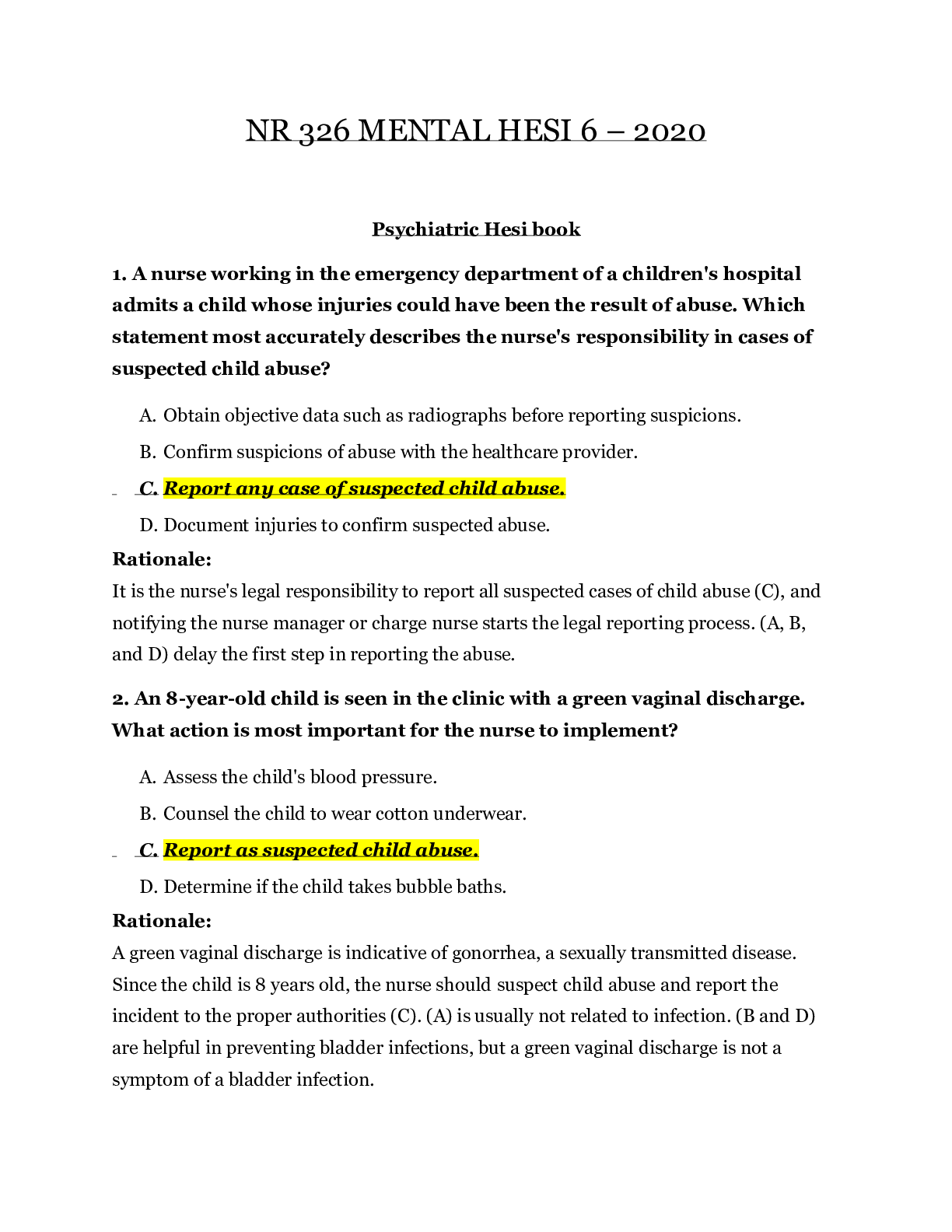
Buy this document to get the full access instantly
Instant Download Access after purchase
Add to cartInstant download
We Accept:

Reviews( 0 )
$12.50
Document information
Connected school, study & course
About the document
Uploaded On
Mar 20, 2021
Number of pages
26
Written in
Additional information
This document has been written for:
Uploaded
Mar 20, 2021
Downloads
0
Views
62

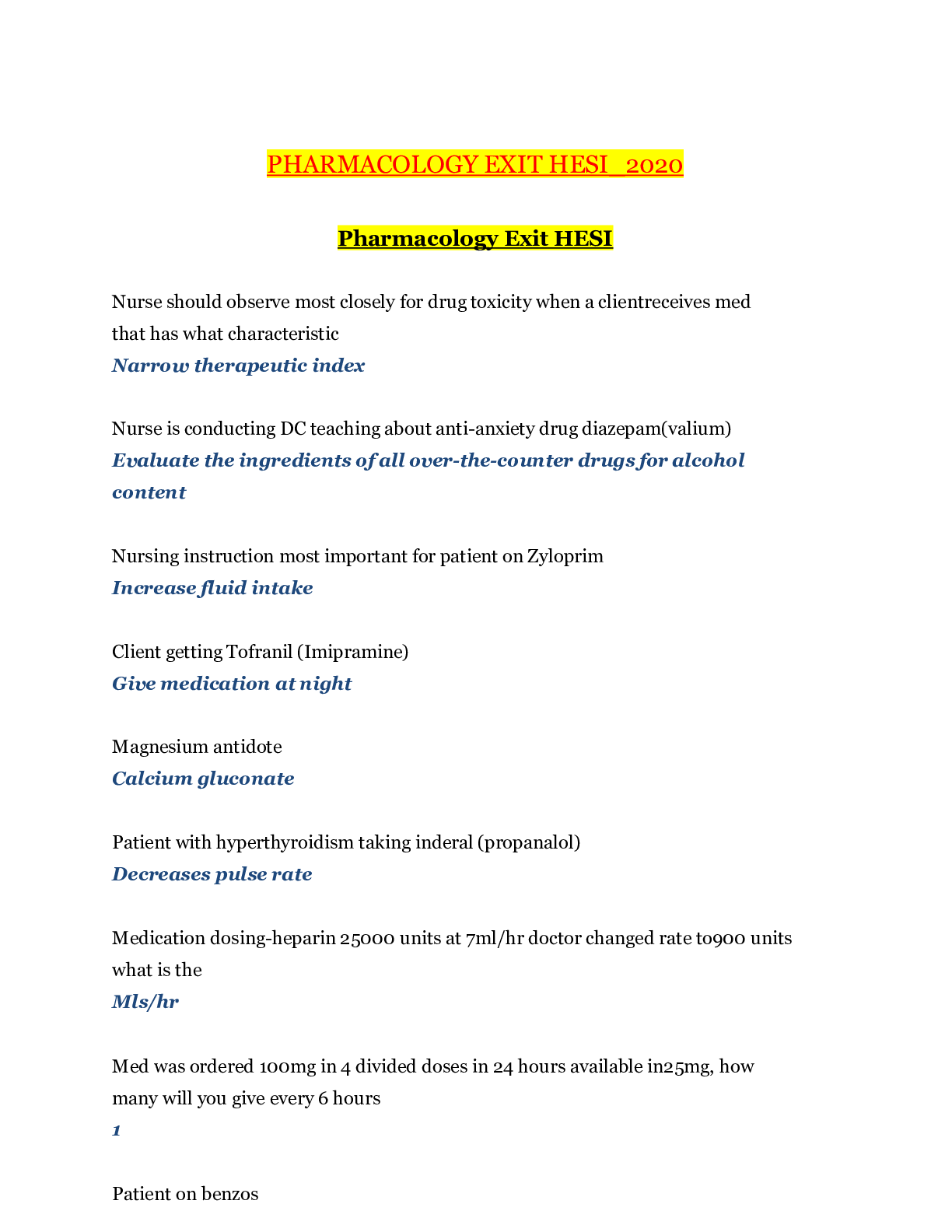
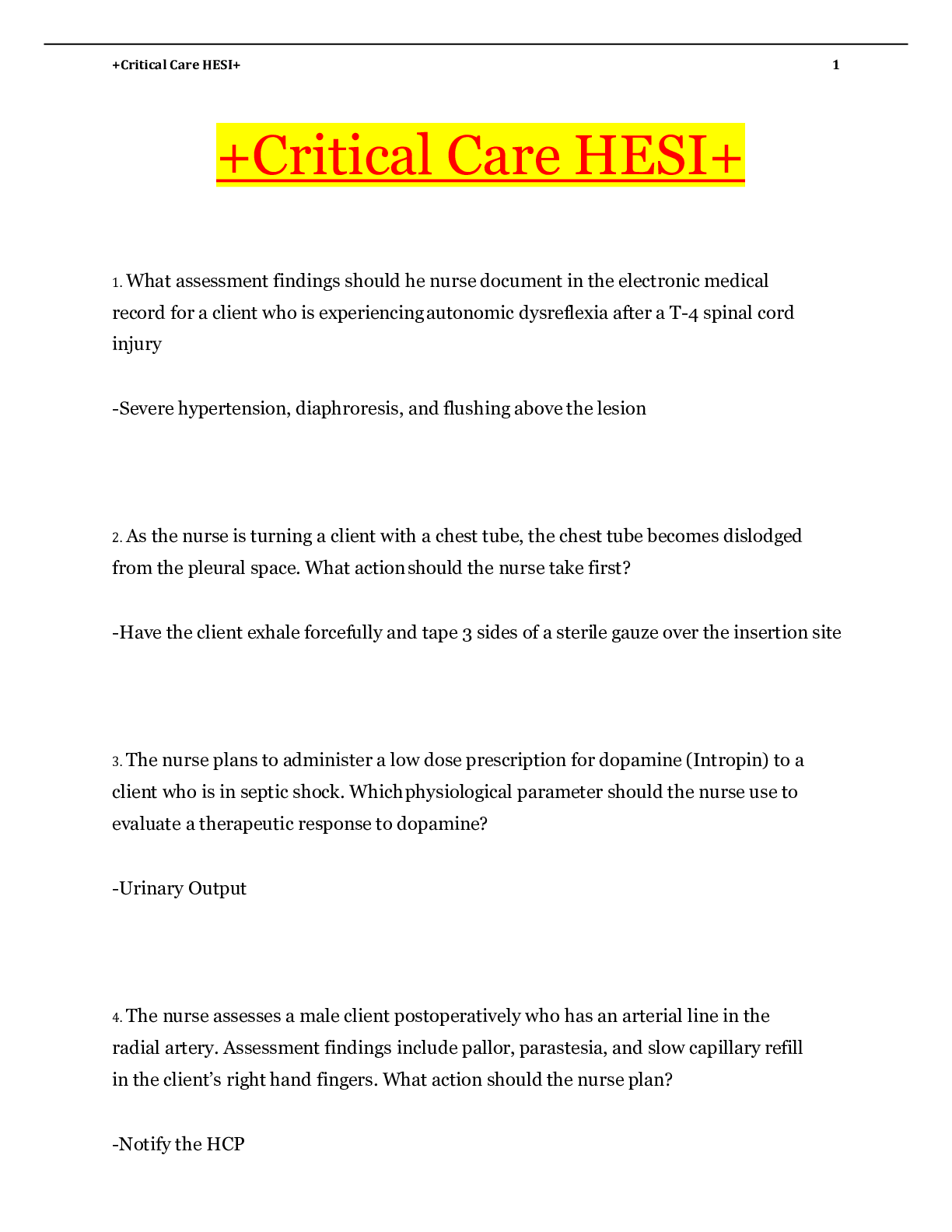


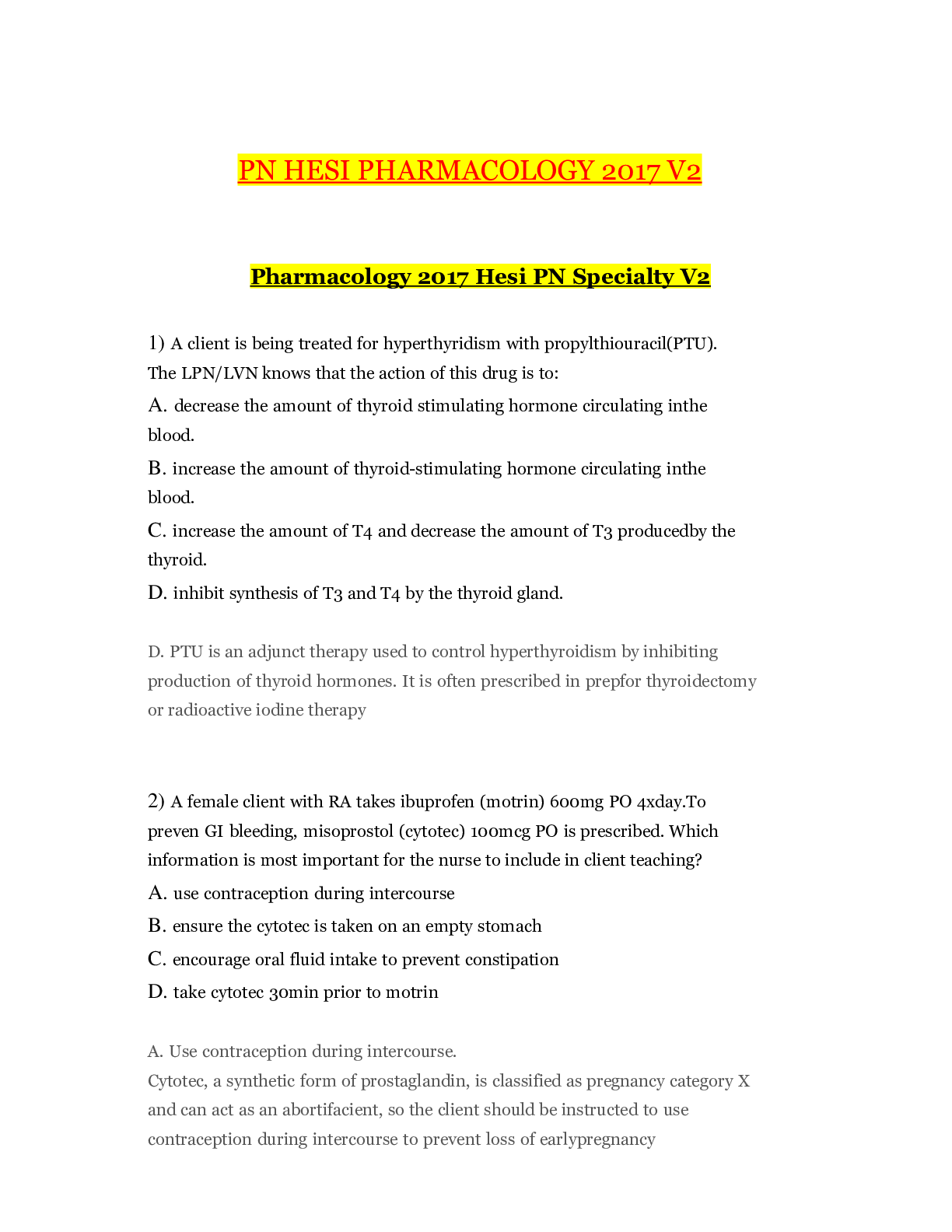
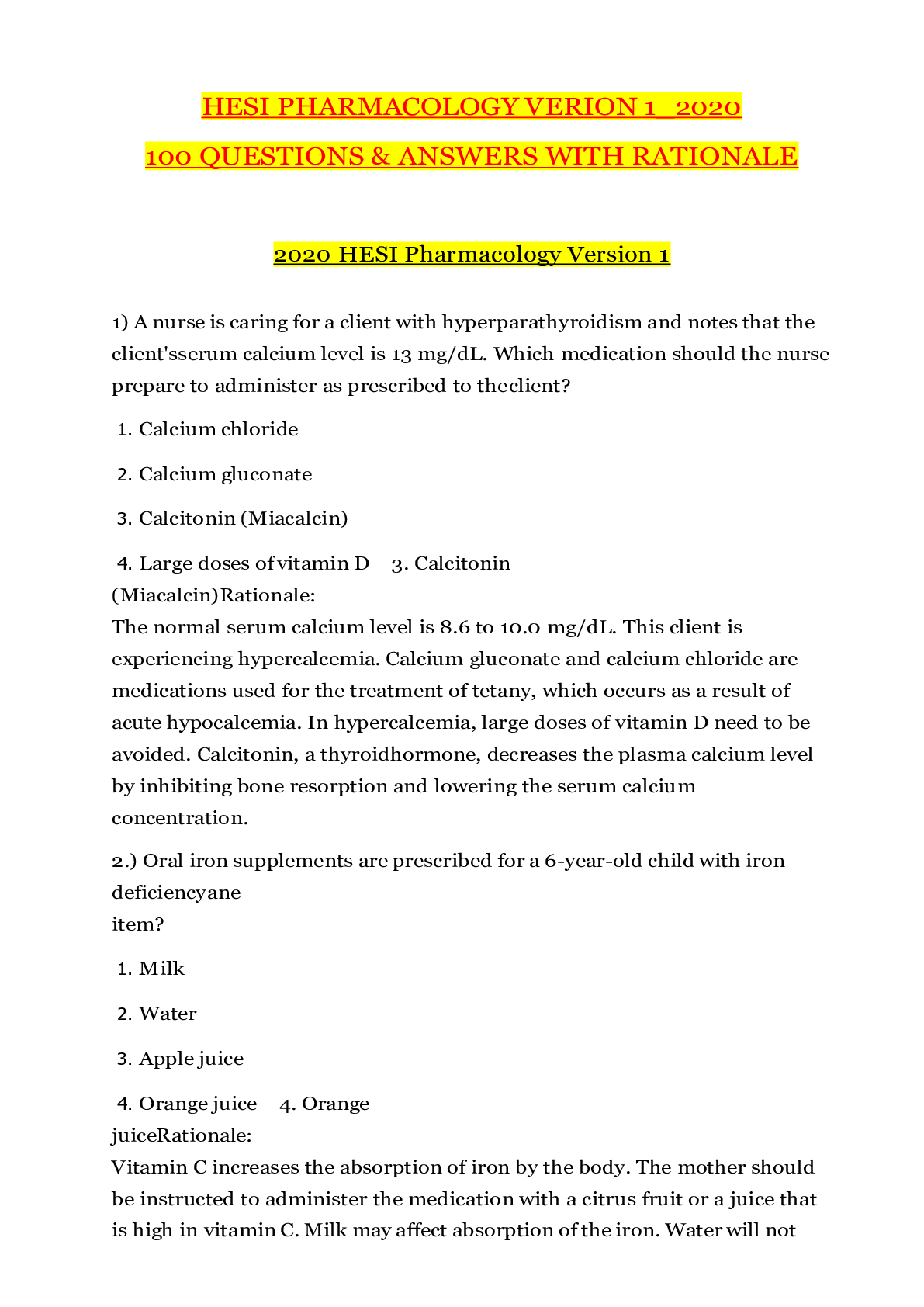






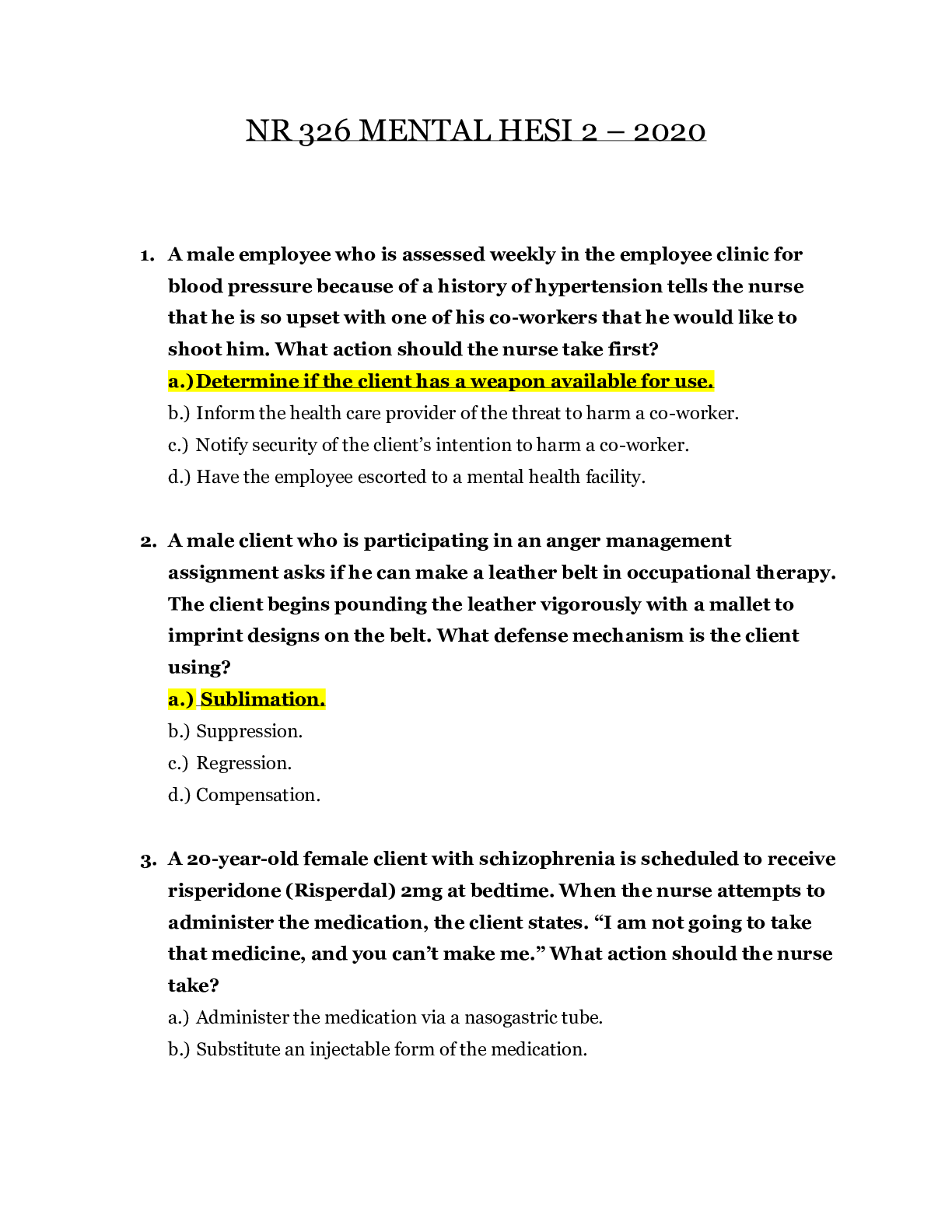
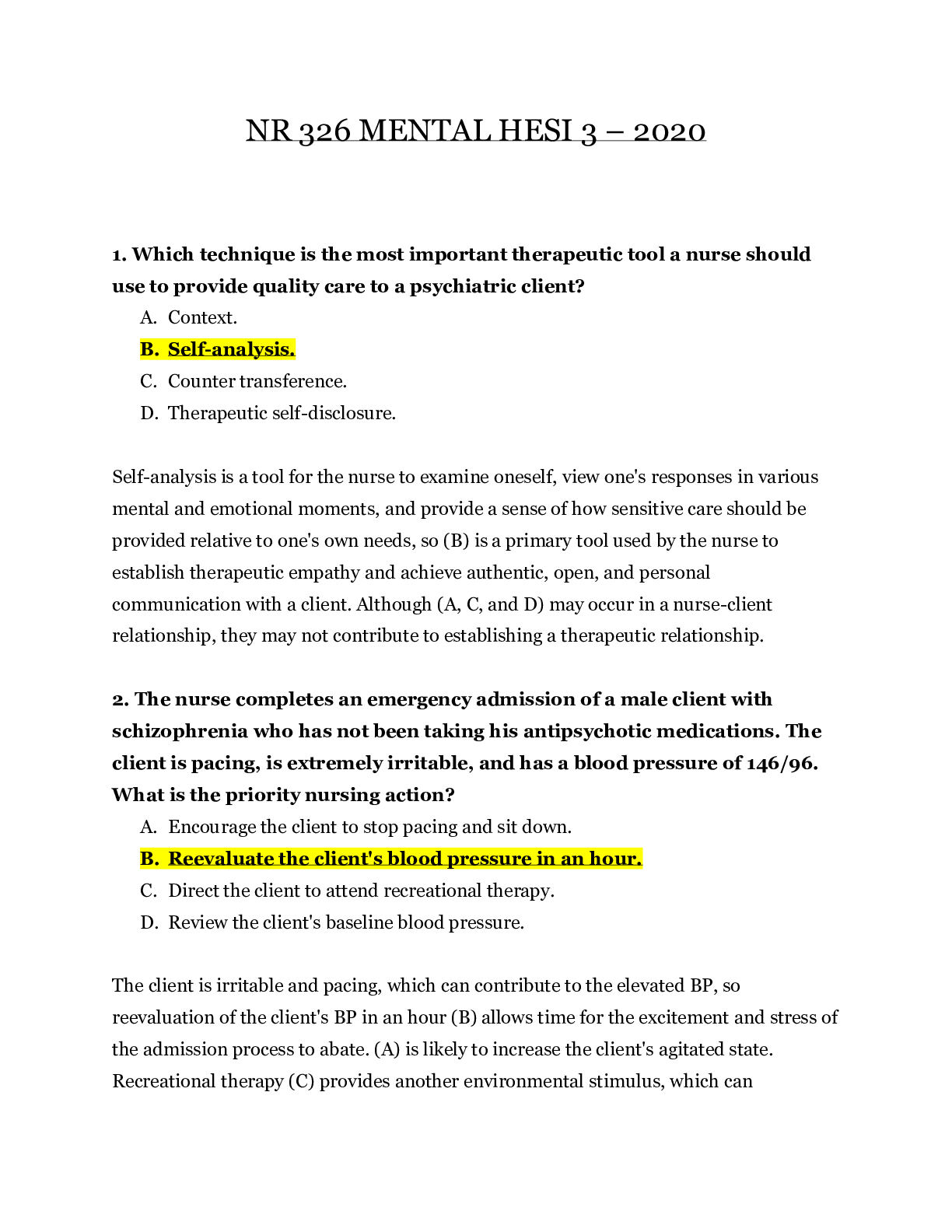



.png)

